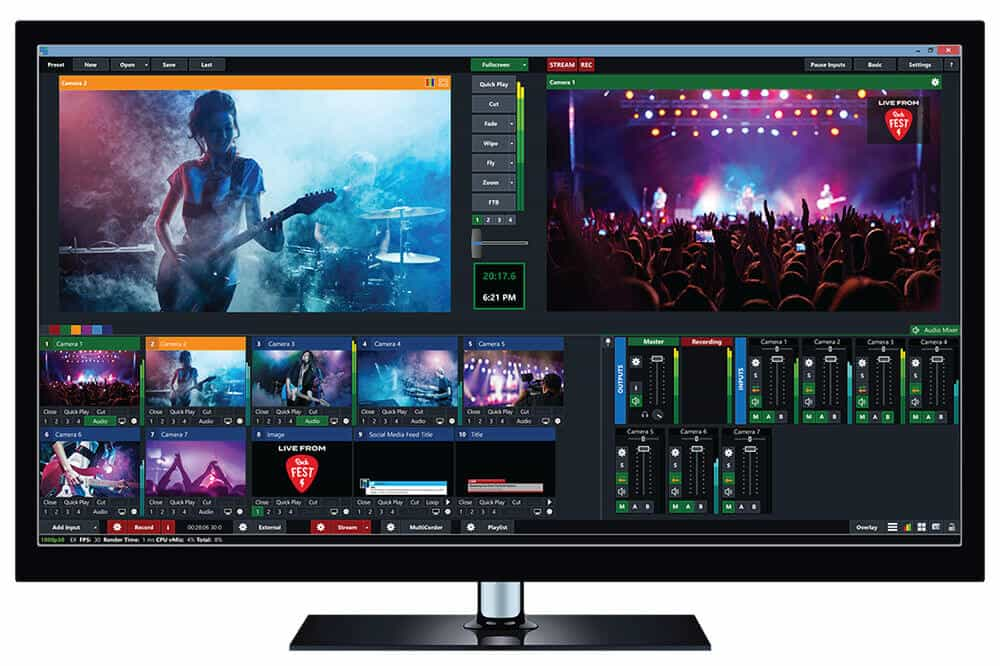MARKET OVERVIEW
Global Depth Sensor market is estimated to reach $5812.3 Million by 2031; growing at a CAGR of 7.8% from 2024 to 2031.
The Global Depth Sensor market is a crucial component of the overall technology market, encompassing the design, production, and utilization of sensors that measure distances between the sensor and objects in their vicinity. With applications spanning a wide array of industries such as consumer electronics, industrial automation, robotics, and automotive safety systems, the global depth sensor market is poised for significant developments and transformations. Devices equipped with depth sensors utilize various signals like infrared light, ultrasound, or laser beams to calculate distances to objects by measuring reflection times. This spatial information is then utilized for creating detailed three-dimensional models or integrated into systems for augmented reality, autonomous navigation, or gesture recognition. The increasing adoption of depth sensors in sectors like consumer electronics, automotive, industrial automation, and healthcare underscores the expanding role of this technology in shaping future technological landscapes. As advancements continue in sensor accuracy, range, and power efficiency, coupled with integration with other cutting-edge technologies like AI and machine learning, the Global Depth Sensor market is expected to play a pivotal role in the development of more sophisticated systems across diverse industries. The rise in demand for intelligent and efficient systems, along with advancements in connectivity and technology, underscores the potential for continued growth and innovation in the Global Depth Sensor market.

GROWTH FACTORS
The Global Depth Sensor market is expected to experience significant growth in the coming years, fueled by a variety of factors that are poised to shape its trajectory. A key driver of this growth is the rising demand for advanced imaging and sensing technologies across a wide array of industries. Applications in autonomous vehicles, robotics, and augmented reality highlight the crucial role that depth sensors play in ensuring accurate depth perception, leading to an increased need for sophisticated and reliable depth sensors. Furthermore, the integration of depth sensors into consumer electronics, such as smartphones, tablets, and gaming consoles, to enable features like facial recognition and gesture control is also propelling the market forward. However, challenges such as high development costs and privacy concerns associated with depth-sensing technology remain areas of concern. Despite these challenges, the future of the Global Depth Sensor market looks promising, with ongoing technological advancements expected to drive innovation and open up new opportunities in various industries. The incorporation of Artificial Intelligence and Machine Learning into depth-sensing technologies is poised to unlock new applications and foster further market growth, positioning depth sensors as a central element in the future technological landscape.

MARKET SEGMENTATION
By Type
The market for Global Depth Sensor is rapidly evolving, driven by both technology development and growing demand for more accurate and reliable sensing solutions across various industries. This makes depth sensors—measuring the distance between the sensor and the objects in its environment—very essential in applications related to autonomous vehicles, augmented-reality appliances, and robotics. In the near future, with innovation, these sensors are going to be taking on more and more things and uses. There are different types of depth sensors, including infrared depth sensors that measure distance by emitting infrared light and Time-of-Flight Sensors that determine depth by calculating the time taken for light signals to reach an object and reflect back to the sensor. Stereo Vision Sensors work with multiple cameras to create a 3D map of the environment, while Structured light sensors project light patterns to estimate depth. Additionally, Ultrasonic depth sensors use sound waves to measure distance, remaining relevant in certain environments where other sensors may not be suitable. As the Global Depth Sensor market continues to evolve, the future of various technologies and industries will be defined by the advancements and applications of these sensors.
By Application
The Global Depth Sensor Market is experiencing significant growth driven by the increasing demand across various application segments. These sensors play a vital role in measuring distances between objects, making them a necessity in many industries. While the use of depth sensors is still in its early stages, the advancement of technology is expected to further expand their applications.
In the automotive sector, depth sensors are crucial for enhancing safety features, especially with the shift towards self-driving vehicles. These sensors enable cars to detect obstacles, pedestrians, and other vehicles, ensuring a safer driving experience. In the field of robotics, depth sensors improve navigation and interaction capabilities, making industrial and service robots more effective in various environments. Additionally, depth sensors are being utilized in the gaming industry to create immersive gaming experiences, capturing real-life details for a more engaging gameplay. As the demand for depth sensors continues to rise across different industries, the future of the Global Depth Sensor market looks promising with new innovations on the horizon.
By End Users
The Global Depth Sensor market is experiencing significant growth, with various industries incorporating sensors into their products and services. These sensors measure distances between objects and their surroundings and are utilized across multiple sectors. The future of the depth sensor market appears promising, particularly in automotive manufacturing, consumer electronics, healthcare, industrial applications, security, gaming, and robotics. Auto manufacturers are integrating depth sensors into ADAS systems to enhance vehicle safety and enable autonomous driving. Consumer electronics companies are leveraging depth sensors in smartphones and cameras for advanced features like facial recognition and augmented reality. In the healthcare sector, depth sensors are improving medical imaging and surgical procedures. Industries are also using depth sensors for automation and process control, enhancing efficiency. With increasing demand for advanced security solutions, depth sensors are becoming crucial for surveillance and threat detection. Additionally, depth sensors are revolutionizing the gaming and robotics industries by enabling immersive experiences and improving robotic functionalities. As industries continue to innovate and integrate depth sensors into various applications, the Global Depth Sensor market is set for robust growth and is poised to be a fundamental technology of the future.
REGIONAL ANALYSIS
The global depth sensors market is experiencing rapid growth across various business sectors, with key regions including North America, Europe, Asia-Pacific, South America, and the Middle East & Africa. Notably, Africa, South America, and the Middle East are emerging as significant players alongside North America and Europe. In North America, countries like the U.S., Canada, and Mexico are leading in technological innovation and adoption of sensing technology, driving the demand for advanced consumer electronics and autonomous systems. In Europe, countries like the UK, Germany, France, and Italy are focusing on automotive safety systems and industrial automation, leading to steady market growth. Asia-Pacific, with countries like India, China, Japan, and South Korea, is investing heavily in research and development for depth sensors, particularly in consumer electronics, smartphones, gaming, and augmented reality. South America, led by Brazil and Argentina, is gradually increasing its adoption of depth sensors in agriculture and mining applications. The Middle East & Africa, including the GCC Countries, Egypt, and South Africa, are witnessing growth in smart city projects and infrastructure development, driving demand for depth sensors. Overall, as innovation and application focus intensifies across these regions, the depth sensor market is poised for significant growth in the coming years.

KEY INDUSTRY PLAYERS
The global depth sensor market is poised for significant growth in the coming years, driven by technological advancements and increasing demand across various industries. Depth sensors have become essential in sectors such as automotive, consumer electronics, healthcare, and robotics, enabling accurate distance measurement between objects and sensors. As these industries continue to evolve, the need for reliable depth-sensing technology is rising, leading to a rapid expansion of the market.
Key players in the Global Depth Sensor market are proactively responding to this growing demand by investing in research and development and forging strategic partnerships to enhance their product offerings. Companies like Sony Semiconductor Solutions Corporation and Panasonic Corporation are at the forefront of innovation, focusing on miniaturization and improving the efficiency of depth sensors. Similarly, Infineon Technologies AG and STMicroelectronics are capitalizing on opportunities in the automotive sector, where depth sensors play a crucial role in advanced driver assistance systems and autonomous driving technologies. Meanwhile, Texas Instruments Incorporated and LMI Technologies Inc. are concentrating on industrial applications, developing sensors that deliver high accuracy and reliability for use in robotics and automation. With the increasing adoption of depth sensors in AR and VR applications in consumer electronics, companies like Intel Corporation, Lumentum Holdings Inc., Broadcom Inc., and Samsung Electronics Co., Ltd. are well-positioned to meet the growing demand and enhance the user experience. As competition among these major players intensifies, the Global Depth Sensor market is expected to witness further advancements and strategic initiatives in the years ahead.
REPORT SCOPE AND SEGMENTATION
|
Attributes |
Details |
|
Market Size By 2031 |
USD 5,812.3 Million |
|
Growth Rate |
CAGR of 7.8% |
|
Forecast period |
2024 - 2031 |
|
Report Pages |
250+ |
|
By Type |
|
|
By Application |
|
|
By End User |
|
|
By Region |
|
|
Key Market Players |
|



_page-000161.jpg)
_page-000168.jpg)
_page-000167.jpg)
_page-000166.jpg)
_page-000165.jpg)






 APAC:+91 7666513636
APAC:+91 7666513636





